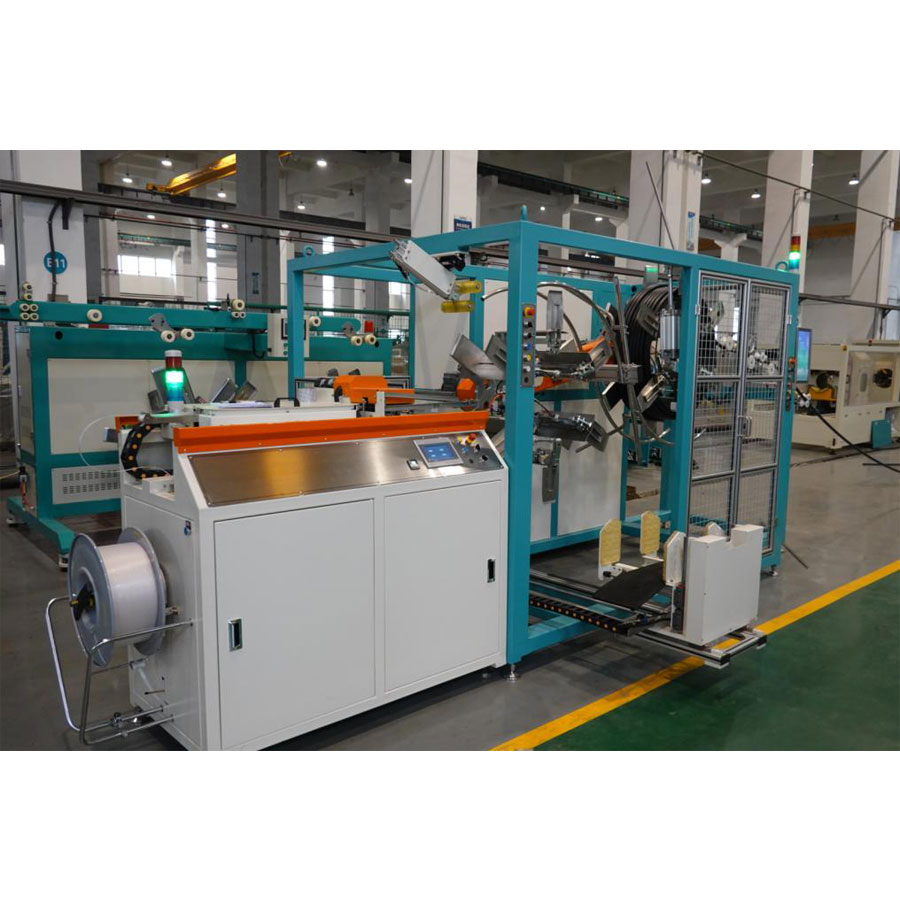- English
- Español
- Português
- русский
- Français
- 日本語
- Deutsch
- tiếng Việt
- Italiano
- Nederlands
- ภาษาไทย
- Polski
- 한국어
- Svenska
- magyar
- Malay
- বাংলা ভাষার
- Dansk
- Suomi
- हिन्दी
- Pilipino
- Türkçe
- Gaeilge
- العربية
- Indonesia
- Norsk
- تمل
- český
- ελληνικά
- український
- Javanese
- فارسی
- தமிழ்
- తెలుగు
- नेपाली
- Burmese
- български
- ລາວ
- Latine
- Қазақша
- Euskal
- Azərbaycan
- Slovenský jazyk
- Македонски
- Lietuvos
- Eesti Keel
- Română
- Slovenski
- मराठी
- Srpski језик
Automation or improvements to existing coilers
2025-03-21
Improving or automating an existing plastic pipe coiler can significantly boost efficiency, reduce waste, and ensure better coil consistency. Here are key areas where automation and improvements can be implemented:
1. Automated Tension Control
Why? Ensures uniform winding without over-stretching or loose coiling.
How?
Use closed-loop tension sensors (load cells, strain gauges) to monitor and adjust tension dynamically.
Implement servo-driven rollers to maintain precise tension throughout the coiling process.
2. Servo Motor and PLC Integration
Why? Allows precise and programmable control over speed, rotation, and coil formation.
How?
Replace manual control systems with PLC (Programmable Logic Controller) and servo motors.
Program adjustable coil diameters, winding speeds, and layering patterns via HMI (Human-Machine Interface).
3. Automatic Coil Layering & Guiding System
Why? Eliminates uneven coils and reduces operator intervention.
How?
Use a linear actuator-driven guiding system to move the pipe back and forth for even distribution.
Implement a vision system or laser sensors to detect coil placement and adjust positioning.
4. Smart Cutting & Clamping System
Why? Reduces manual intervention and increases throughput.
How?
Install an automated cutting unit (pneumatic/hydraulic cutter) synchronized with coiling completion.
Integrate robotic arm or pneumatic clamping to hold and release coils automatically.
5. Coil Size Detection & Changeover Automation
Why? Speeds up the transition between different coil sizes.
How?
Implement a sensor-based coil diameter measurement to auto-adjust machine settings.
Use quick-change mandrels with motorized expansion and contraction.
6. Data Logging & Industry 4.0 Integration
Why? Enhances quality control and predictive maintenance.
How?
Equip the system with IoT sensors to track performance metrics (speed, torque, tension).
Use SCADA or cloud-based monitoring for remote diagnostics and optimization.
7. Automated Coil Ejection & Handling
Why? Reduces manual labor and streamlines production.
How?
Use pneumatic ejectors or robotic pick-and-place systems to move finished coils to storage.
Integrate a conveyor system for automated coil stacking and packaging.
8. Energy Efficiency Upgrades
Why? Lowers operational costs.
How?
Replace standard motors with high-efficiency VFD-controlled motors.
Use regenerative braking systems to recover energy during slowing/stopping operations.
Implementation Strategy
1. Assess Current System – Identify bottlenecks and inefficiencies.
2. Prioritize Upgrades – Focus on high ROI automation areas.
3. Integrate in Phases – Implement improvements step by step.
4. Test and Optimize – Fine-tune automation settings for peak performance.




